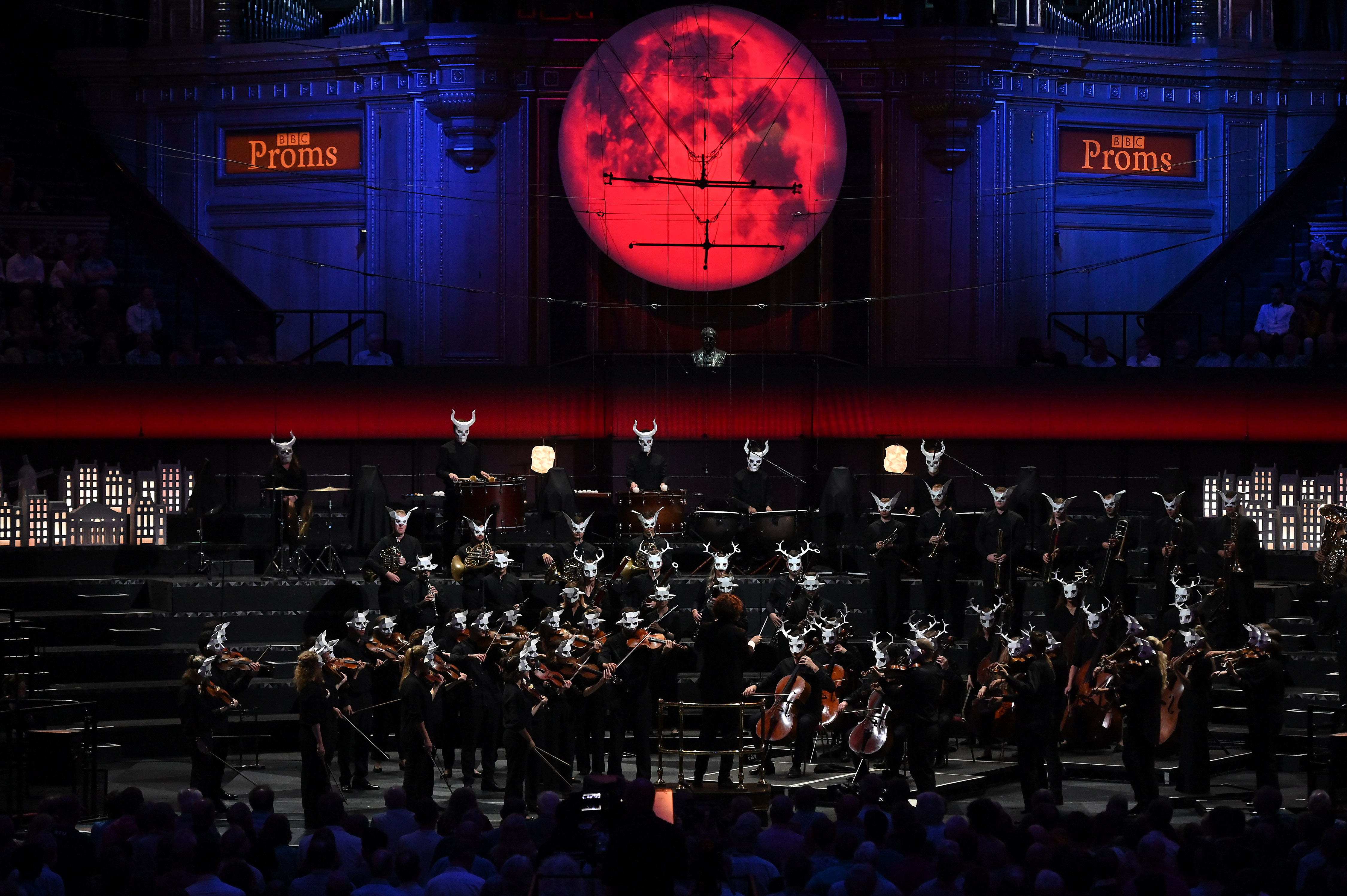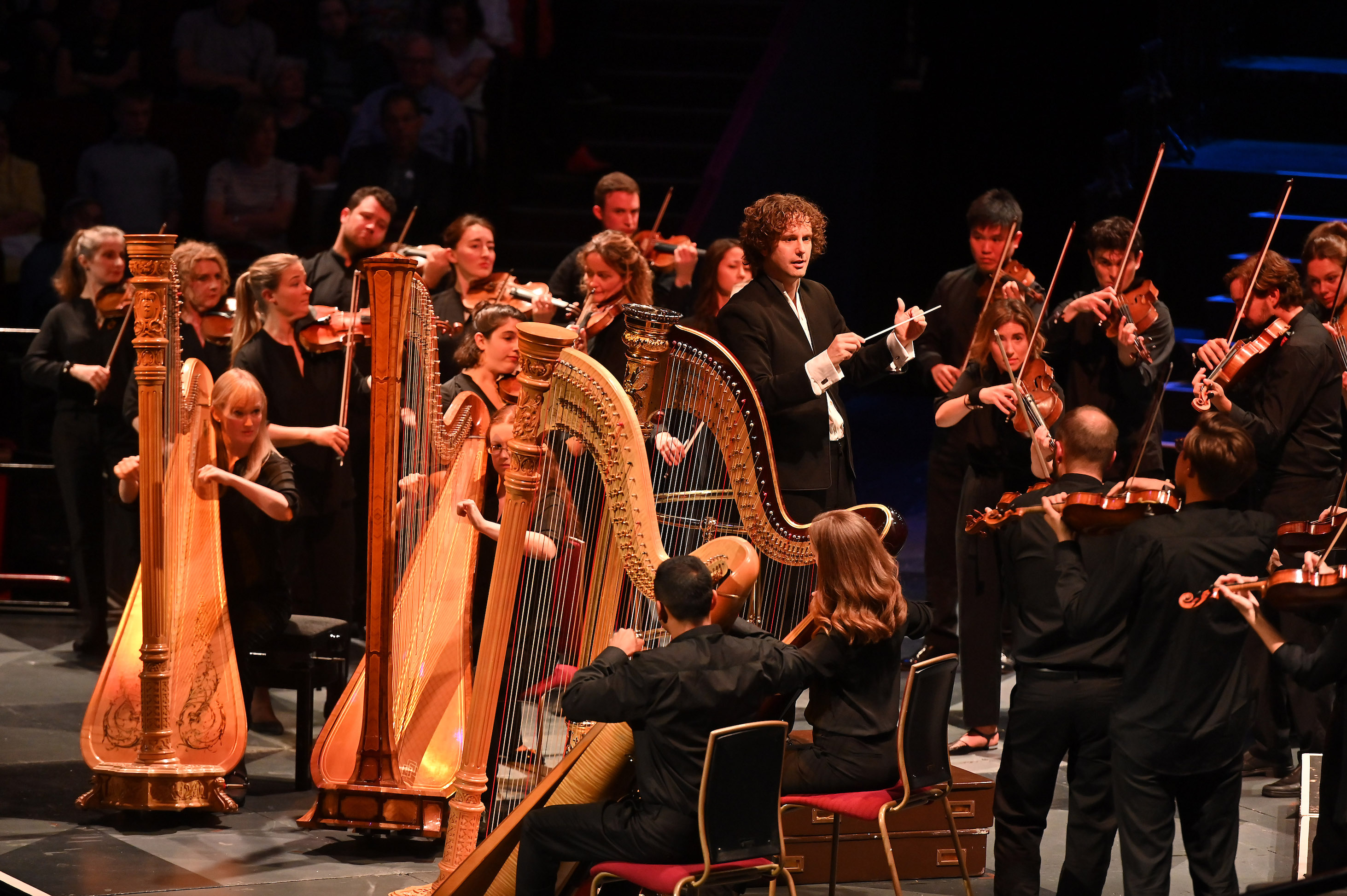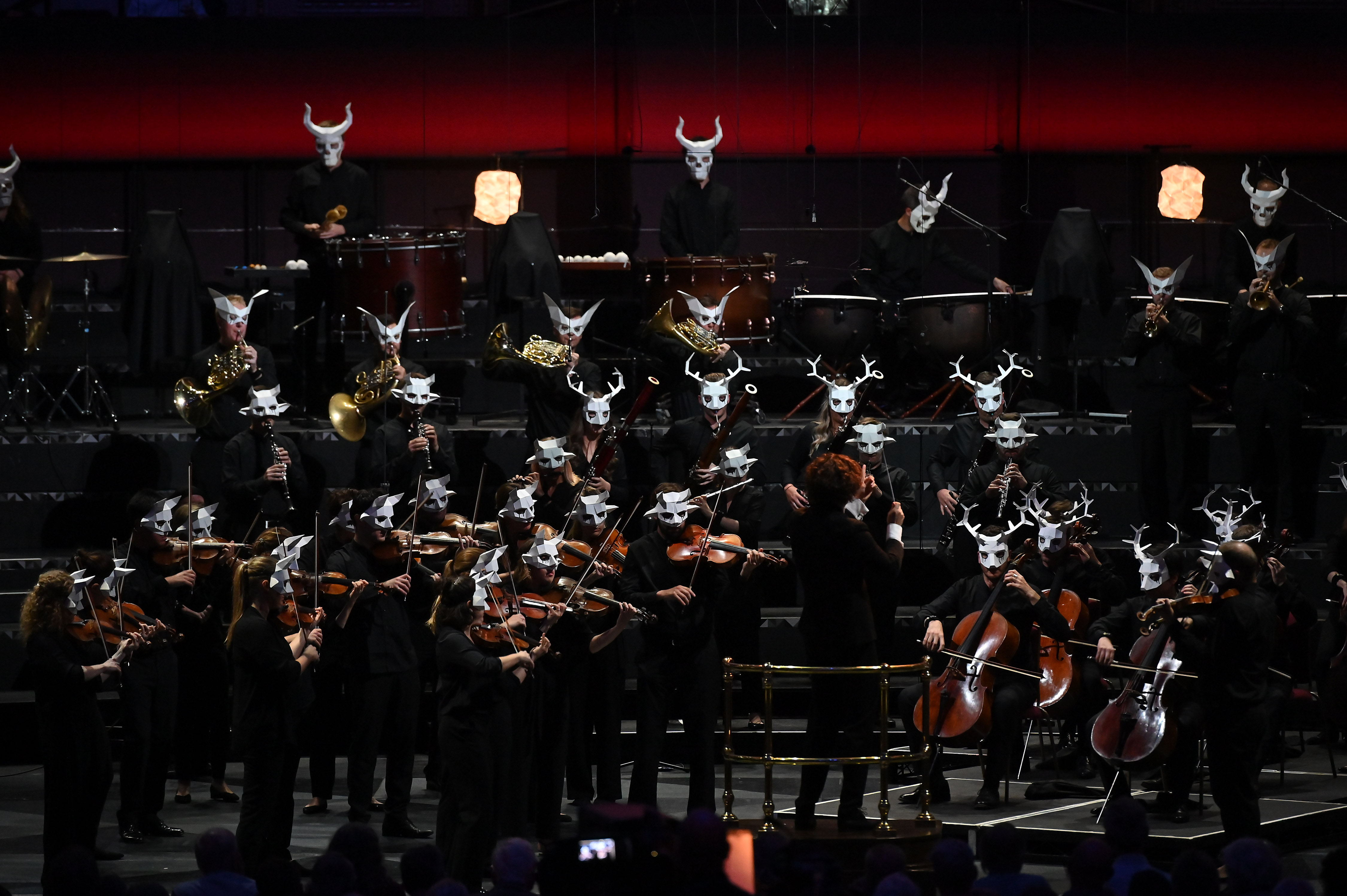Prom 72/3: Aurora Orchestra, Collon review – Berlioz not quite lost in showbiz | reviews, news & interviews
Prom 72/3: Aurora Orchestra, Collon review – Berlioz not quite lost in showbiz
Prom 72/3: Aurora Orchestra, Collon review – Berlioz not quite lost in showbiz
Stagey stunts but fine music in dramatised 'Symphonie fantastique'
For a few seconds last night, the Royal Albert Hall turned into London’s biggest – and cheesiest – disco.
For more than a decade, the enterprising Auroras have not only revitalised a stable of repretoire warhorses through their thrillingly alert, fully memorised performances. They have found fresh ways to make the familiar masterworks live in new ways for new audiences. Not every gambit they try will come off, of course. Last night saw a few missteps and longueurs. Crucially, though, the musical bedrock for their adventures never cracks. Both as an ensemble and in its solo voices, the Aurora – its forces swollen last night by guests who included the ace timpanist Antoine Siguré– sounded a stylish outfit even if you closed your eyes.
More problematic was the shift from the format of the music-education lecture with which Collon began – along with some so-so badinage with actor Mathew Baynton, who spoke Berlioz’s words and embodied his suffering artist – to the dramatised symphony itself. This prosy preamble could have been shorter, although Collon’s demonstration of how Berlioz evolves his ideé fixe love theme – as groups of instrumentalists entered to play the relevant passages – lucidly made its points. Having sold us the wonders of this “novel and magnificent” story-telling symphony that opened the road not just to Wagner’s operas but the Star Wars scores as well, Collon and Baynton didn't then lapse into silence and let the music do the rest of the talking. Each of the five movements had its own spoken introduction by Baynton too: superfluous, perhaps, though it’s always a pleasure to hear the tangy prose of Berlioz’s Memoirs.

Collon spun them through wide dynamic arcs of sound, making the most of some hall-shaking crescendos. He was never afraid either to put the brakes on tempi whose variations underlined every changing passion of the score. Watching over this frenetic action, an outsize French tricolore gave way in the country scene and afterwards to a vast projected moon, which turned a lurid blood-red for the witches’ sabbath of the finale.

Good fun, yes, but the music should scare us enough – as it did – to make fancy-dress costumes from some Hammer Horror-themed party irrelevant. So by no means every histrionic flourish worked. Collon and his creative team still deserve plaudits for the ingenious showbiz swagger they brought to this most stage-struck of symphonies. Above all, the music-making never lost its way even as the players traipsed around the hall. Berlioz, that supreme old ham, would have relished their commitment above all.
rating
Share this article
The future of Arts Journalism
You can stop theartsdesk.com closing!
We urgently need financing to survive. Our fundraising drive has thus far raised £49,000 but we need to reach £100,000 or we will be forced to close. Please contribute here: https://gofund.me/c3f6033d
And if you can forward this information to anyone who might assist, we’d be grateful.

Subscribe to theartsdesk.com
Thank you for continuing to read our work on theartsdesk.com. For unlimited access to every article in its entirety, including our archive of more than 15,000 pieces, we're asking for £5 per month or £40 per year. We feel it's a very good deal, and hope you do too.
To take a subscription now simply click here.
And if you're looking for that extra gift for a friend or family member, why not treat them to a theartsdesk.com gift subscription?
more Classical music
 Hallé John Adams festival, Bridgewater Hall / RNCM, Manchester review - standing ovations for today's music
From 1980 to 2025 with the West Coast’s pied piper and his eager following
Hallé John Adams festival, Bridgewater Hall / RNCM, Manchester review - standing ovations for today's music
From 1980 to 2025 with the West Coast’s pied piper and his eager following
 Kaploukhii, Greenwich Chamber Orchestra, Cutts, St James's Piccadilly review - promising young pianist
A robust and assertive Beethoven concerto suggests a player to follow
Kaploukhii, Greenwich Chamber Orchestra, Cutts, St James's Piccadilly review - promising young pianist
A robust and assertive Beethoven concerto suggests a player to follow
 Robin Holloway: Music's Odyssey review - lessons in composition
Broad and idiosyncratic survey of classical music is insightful but slightly indigestible
Robin Holloway: Music's Odyssey review - lessons in composition
Broad and idiosyncratic survey of classical music is insightful but slightly indigestible
 Classical CDs: Wolf-pelts, clowns and social realism
British ballet scores, 19th century cello works and contemporary piano etudes
Classical CDs: Wolf-pelts, clowns and social realism
British ballet scores, 19th century cello works and contemporary piano etudes
 Bizet in 150th anniversary year: rich and rare French offerings from Palazzetto Bru Zane
Specialists in French romantic music unveil a treasure trove both live and on disc
Bizet in 150th anniversary year: rich and rare French offerings from Palazzetto Bru Zane
Specialists in French romantic music unveil a treasure trove both live and on disc
 Scottish Chamber Orchestra, Ibragimova, Queen’s Hall, Edinburgh review - rarities, novelties and drumrolls
A pity the SCO didn't pick a better showcase for a shining guest artist
Scottish Chamber Orchestra, Ibragimova, Queen’s Hall, Edinburgh review - rarities, novelties and drumrolls
A pity the SCO didn't pick a better showcase for a shining guest artist
 Kilsby, Parkes, Sinfonia of London, Wilson, Barbican review - string things zing and sing in expert hands
British masterpieces for strings plus other-worldly tenor and horn - and a muscular rarity
Kilsby, Parkes, Sinfonia of London, Wilson, Barbican review - string things zing and sing in expert hands
British masterpieces for strings plus other-worldly tenor and horn - and a muscular rarity
 From Historical to Hip-Hop, Classically Black Music Festival, Kings Place review - a cluster of impressive stars for the future
From quasi-Mozartian elegance to the gritty humour of a kitchen inspection
From Historical to Hip-Hop, Classically Black Music Festival, Kings Place review - a cluster of impressive stars for the future
From quasi-Mozartian elegance to the gritty humour of a kitchen inspection
 Shibe, LSO, Adès, Barbican review - gaudy and glorious new music alongside serene Sibelius
Adès’s passion makes persuasive case for the music he loves, both new and old
Shibe, LSO, Adès, Barbican review - gaudy and glorious new music alongside serene Sibelius
Adès’s passion makes persuasive case for the music he loves, both new and old
 Anja Mittermüller, Richard Fu, Wigmore Hall review - a glorious hall debut
The Austrian mezzo shines - at the age of 22
Anja Mittermüller, Richard Fu, Wigmore Hall review - a glorious hall debut
The Austrian mezzo shines - at the age of 22
 First Person: clarinettist Oliver Pashley on the new horizons of The Hermes Experiment's latest album
Compositions by members of this unusual quartet feature for the first time
First Person: clarinettist Oliver Pashley on the new horizons of The Hermes Experiment's latest album
Compositions by members of this unusual quartet feature for the first time

Add comment